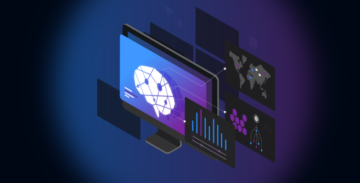
What is observability engineering?
Observability engineering is an advanced and systematic approach to understanding complex systems' internal states by examining their outputs. It's an essential component of the DevOps agile development methodology, which requires rapid feedback on application integrity and performance.
What’s the purpose of observability engineering?
Unlike traditional monitoring, which typically involves preconfigured alerts and dashboards based on known issues, observability provides a holistic view of a system's health and performance. It enables the detection, diagnosis, and resolution of unknown or unforeseen issues before they affect system performance.
In IT, observability enables organizations to measure a system’s current state based on the data it generates, such as logs, metrics, and traces. Observability engineering refers to the process of building and maintaining observable systems using sophisticated tools and techniques to collect, analyze, and visualize data from logs, metrics, and traces, thereby gaining deep insights into applications' and infrastructure's behavior.
Traditional IT monitoring tools and methods can't meet the demands of modern software systems with complex infrastructure and many interactions between distributed components. Observability techniques can spot unusual patterns and behaviors while providing insights into how users interact with software systems. They help administrators and DevOps engineers understand the dynamics of cloud-native elements, such as microservices, containers, and pods.
The three data pillars of observability engineering
Observability engineering is based on three main pillars: logs, metrics, and traces. Each provides different data that, when combined, creates a comprehensive picture of system performance and health.
Logs
Logs are detailed, time-stamped records of events within a system or application. They help observability engineers understand a sequence of events leading up to an anomalous condition. They capture errors, warnings, informational messages, and debugging information chronologically.
Metrics
Metrics track performance elements such as CPU usage, memory consumption, storage access, and network traffic and store them as time-series data. By analyzing metrics over time, teams can identify trends that predict an event, such as memory leaks or bandwidth problems. This data is useful for proactive maintenance.
Traces
Traces represent the path and timing of requests as they propagate through a distributed system. They show how different services interact to enable a better understanding of a system's behavior. Reports are typically represented visually to show each step in a process so teams can identify delays more quickly.
How do organizations use observability engineering?
Observability engineering plays a critical role in IT operations and software development in several ways.
Enhanced system monitoring
Traditional monitoring tools were designed to trigger alerts when certain predefined anomalies occurred. This approach limits the ability to detect unanticipated deviations from normal patterns.
Observability engineering constantly monitors systems in their steady state so teams can identify fluctuations more quickly and take preventive actions. While a dashboard help to visually represent data, AI-powered solutions will spot anomalies faster.
Incident response
Fluctuations from normal operations, called events, are flagged and logged with details such as a unique ID, headers, variables, and an execution time stamp. This enables a more precise response.
Observability tools help engineers quickly identify the root cause by examining detailed logs, metrics, and traces. This speeds up the troubleshooting process and minimizes downtime. AI is increasingly used to automate root-cause analysis and recommend remediation steps.
Performance optimization
By understanding applications' detailed performance characteristics, observability enables teams to optimize their systems for better performance and efficiency. By tracking key performance indicators such as response time, throughput, and error rates, engineers can make informed decisions to improve stability and responsiveness.
Observability tools can also monitor user interactions and measure performance from the user's perspective, helping engineers pinpoint areas for improvement.
Capacity planning
Observability helps engineering teams forecast future resource requirements by tracking real-time and historical data on critical elements' use, such as CPU, memory, and storage. This allows teams to quickly identify underutilized or overburdened resources so they can make informed decisions about load-balancing and capacity planning. Continuous monitoring and AI-guided trend analysis learn from these decisions to provide more informed guidance.
Security and compliance
Observability tools can also detect unusual or malicious activity within a system, playing a role in security monitoring and compliance. Log and network traffic pattern analysis can help identify security breaches and vulnerabilities before they can be exploited.
The benefits of observability engineering
Observability engineering has several advantages that help enhance IT operations.
Shortened recovery time
Observability supports faster issue identification and resolution. It reduces mean time to recovery by providing detailed insights into system behavior derived from analyzing volumes of data that are too large for a human operator to process easily.
Proactive issue identification
Potential problems can be identified before they affect end users. Continuously monitoring and analyzing system performance helps maintain and improve application reliability.
Data-supported decision making
Data-driven insights from observability tools help teams make informed decisions regarding system architecture, resource allocation, and performance optimization. For example, data may identify that activity typically peaks at certain times of day, allowing observability teams to provision extra capacity on a targeted basis.
Continuous improvement
Developers using agile DevOps techniques better understand how their code behaves in production. This helps them more quickly identify quality errors and reduce debugging time.
The challenges facing observability engineering
While observability engineering offers several benefits, it can also create challenges in certain situations, including the following:
Data overload. A medium-sized application can generate hundreds of gigabytes of observability data each day. This easily overwhelms human operators' capabilities and requires sophisticated tooling to analyze.
Complexity. Implementing observability in a complex, distributed system of interconnected applications and services running on various platforms and cloud environments is challenging. It requires a deep understanding of the system architecture and interactions, as well as specialized tools and expertise.
Cost. Implementing an observability strategy requires significant investments in tools, infrastructure, and people with specialized skills. However, the value delivered can often exceed the cost. Organizations should conduct a careful cost-benefit analysis to ensure the value outweighs the investment.
Security concerns. Because observability practices collect large amounts of data, robust security measures are needed to protect sensitive information.
Infrastructure evolution. The rapid adoption of AI training and inferencing exemplifies how unpredictable the IT landscape can be. AI model training requires different infrastructure and processes than transaction processing. A robust observability strategy and tool set should be able to adapt to these changes.
Skills. Observability engineering requires specialized skills and knowledge. Hiring and training people can be difficult and expensive.
The importance of equipping teams with observability engineering
With software becoming increasingly essential to organizations, observability engineering has become mission-critical. Its benefits of supporting high-performing, reliable, and secure systems may outweigh the costs and operational challenges.
The importance of observability engineering is likely to grow as IT environments become more complex. High-performing, continuously available, and scalable infrastructure will be essential to organizations that want to stay ahead in a competitive and fast-changing environment.
FAQs about observability engineering
How is observability engineering different from traditional monitoring?
Monitoring relies on predefined alerts and thresholds to detect known issues, while observability engineering provides a holistic, data-driven view of systems. It enables the discovery of unknown or unexpected problems by analyzing logs, metrics, and traces in context.
What are the three pillars of observability engineering?
The pillars are logs, metrics, and traces. Logs provide event records, metrics capture numerical performance data, and traces map request flows across distributed systems. Together, they reveal correlations and root causes of system behavior.
Why is observability engineering important for DevOps teams?
DevOps requires rapid and reliable feedback from production environments. Observability engineering equips teams with real-time insights to identify failures, measure user impact, speed up incident response, and reduce debugging time, supporting continuous delivery.
What challenges do organizations face when implementing observability engineering?
Key challenges include data overload, tool complexity, costs, security risks from sensitive telemetry, and hiring specialized skills. Overcoming these requires the right platform and automation to manage and scale environments effectively.
How does observability engineering support security and compliance?
By continuously monitoring logs, requests, and patterns, observability tools can detect anomalies, intrusions, or data exposure risks. This proactive detection strengthens security posture and helps organizations meet compliance requirements.


